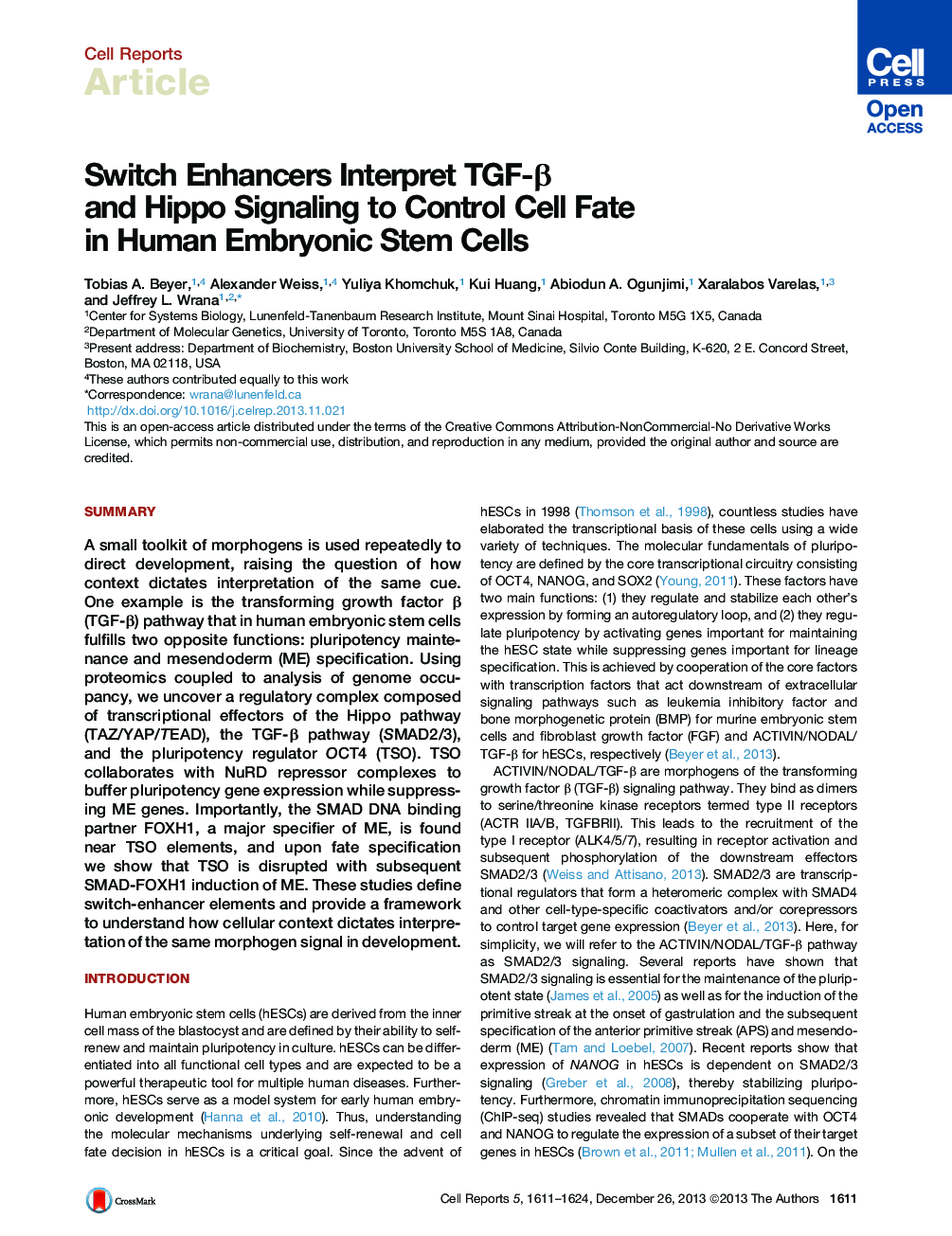| کد مقاله | کد نشریه | سال انتشار | مقاله انگلیسی | نسخه تمام متن |
|---|---|---|---|---|
| 2040614 | 1073120 | 2013 | 14 صفحه PDF | دانلود رایگان |

• TGF-β, Hippo, and OCT4 converge to form TSO complexes in human embryonic stem cells
• TSO represses mesendoderm (ME) through regulatory “switch enhancers”
• Switch enhancers also contain TGF-β-regulated FOXH1 elements that induce ME
• Switch elements differentially interpret TGF-β in pluripotency versus ME environs
SummaryA small toolkit of morphogens is used repeatedly to direct development, raising the question of how context dictates interpretation of the same cue. One example is the transforming growth factor β (TGF-β) pathway that in human embryonic stem cells fulfills two opposite functions: pluripotency maintenance and mesendoderm (ME) specification. Using proteomics coupled to analysis of genome occupancy, we uncover a regulatory complex composed of transcriptional effectors of the Hippo pathway (TAZ/YAP/TEAD), the TGF-β pathway (SMAD2/3), and the pluripotency regulator OCT4 (TSO). TSO collaborates with NuRD repressor complexes to buffer pluripotency gene expression while suppressing ME genes. Importantly, the SMAD DNA binding partner FOXH1, a major specifier of ME, is found near TSO elements, and upon fate specification we show that TSO is disrupted with subsequent SMAD-FOXH1 induction of ME. These studies define switch-enhancer elements and provide a framework to understand how cellular context dictates interpretation of the same morphogen signal in development.
Graphical AbstractFigure optionsDownload as PowerPoint slide
Journal: - Volume 5, Issue 6, 26 December 2013, Pages 1611–1624